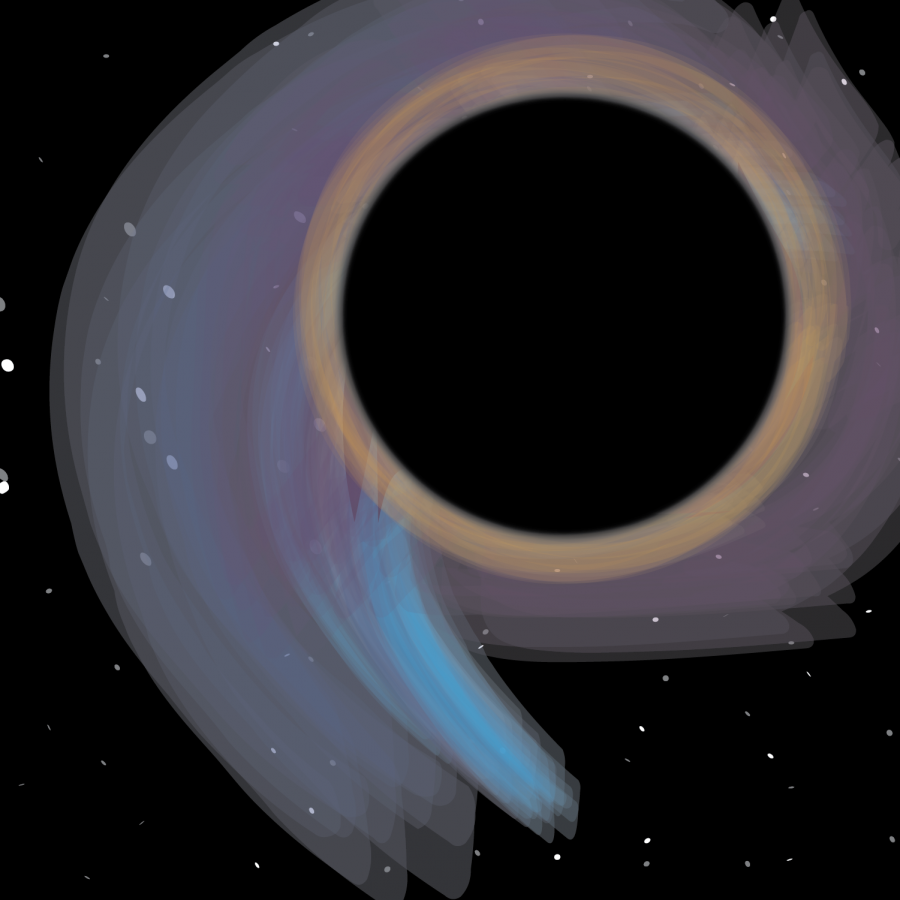Capturing an absence of light: First black hole to be imaged in 2019
Nov 15, 2018
It’s an exciting time for astrophysicists as our working knowledge of outer space expands and our ability to visually capture its greatest wonders grows as well. The first image of a black hole is soon to be captured by the Event Horizon Telescope, which is a large collaboration of nearly 200 scientists from around the world.
According to the Event Horizon Telescope Organization, it is creating a black hole “silhouette” using instrumental effects to create the output for imaging and analysis. Once the organization is confident in the accuracy of its procedures and analyses, these images will be publicized.
Among this science council, Dr. Charles Gammie of the University’s Department of Physics specifically creates numerical simulations of black holes that are useful in selling the idea of this project to various funding agencies, including supportive private foundations. These simulations are being used to interpret the data collected within the collaboration.
Gammie joined the faculties of physics and astronomy in 1999. His research focuses on star and planet formation, accretion physics and black holes. He is a leader in the computer simulation of astrophysical plasmas.
The concept of “capturing the image of the first black hole” can be difficult. The EHT is not directly taking a snapshot of a black hole, because it itself does not emit any light.
Get The Daily Illini in your inbox!
“There is a bunch of gases that fall into the black hole, mostly hydrogen and helium that are falling in from the space between the stars called interstellar medium,” Gammie said. “As these gases are falling in and swirling around the black hole, they are compressing close to each other. This creates very high temperature between a billion and a trillion Kelvin. All the electrons and protons and helium nuclei move around very quickly, around the speed of light. In doing so, they give off radiation.”
To further understand where the image is taken, Gammie explained the concept of escape speeds, which is the speed threshold at which an object can escape the gravitational influence of a mass. For a black hole, the threshold is the speed of light.
If an object that is close to the speed of light is within appropriate proximity of a black hole, it could be captured and never escape. Due to this, the EHT needs to take images off the region of space around the black hole, called the event horizon.
The EHT takes these images using a network of radio antennae that are stationed all around the world.
“The observatories have figured out how to point the telescope with pretty good accuracy. So one can type in a number and the telescope will slew to that point and observe at the appropriate wavelength,” Gammie said. “So the appropriate wavelength corresponds to around one millimeter radiation. So 230 GHz is the frequency and, you know, to put that in some more sensible terms, 5 GHz is (the frequency of) your microwave oven.”
Because of this very high frequency, the experiment requires locations that are very high, where the air is dry. One of these key sites is at the top of the Mauna Kea volcano in Hawaii.
So far, there have been six observatory sites located in Hawaii, Arizona, Mexico, Chile, the South Pole and Spain. The collaboration is hoping to expand to the Alps and Greenland, too.
At these observatory sites, there are campaigns that happen every spring. This season is best because that is when the sources are above the horizon and visible from all the sites. During that one week, three to seven nights are spent observing, depending on the weather. For example, “if it rains in Chile, which is very unusual, we won’t be able to observe. Or if it snows in Hawaii, which is not that unusual up on Mauna Kea, we’re also out of luck,” Gammie said.
To get an idea of how the images are exactly created, Gammie explained the successful observing run in 2017. In April 2017, there was a set of data that was recorded at each site.
“Each site takes the data and records it on a disk drive. So there’s a big rack full of disk drives which are designed to operate at altitude, and then those disk drives get shipped to one of the facilities,” Gammie said.
There are two facilities, one in Massachusetts and one in Bonn, Germany. They each look at different parts of the data. Eventually, the data is combined in a computer software to make an image. It takes quite a bit of time; the 2017 run is still processing.
The simulations that Gammie is involved in creating are being used to interpret the data that is currently being discussed within the collaboration. Around February 2019, this information is predicted to be published in a scientific paper, arousing a lot of press attention to the first image of the black hole.
Within the astrophysics field, the EHT project would help reach the long-standing goal of observing a black hole. These findings could “lead to images of strong gravity effects among the event horizon, and to the direct detection of dynamics near the black hole as matter orbits at near light speeds.” This would ultimately lead more enhanced studies on the “general relativity in the strong field regime, accretion and outflow processes at the edge of a black hole, the existence of event horizons and fundamental black hole physics,” according to the EHT website.






